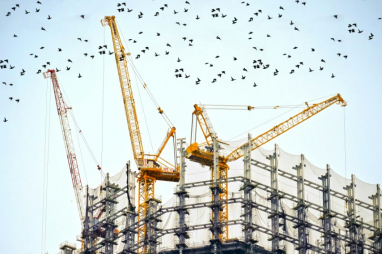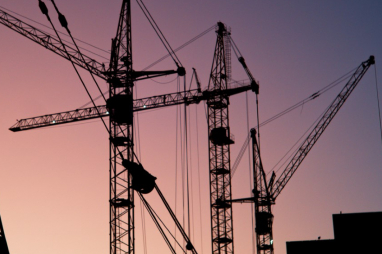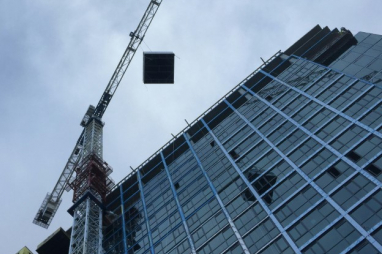- DJ9292 , Dunk High Up Sail Sneakers , Nike AIR PEGASUS 83 PRM - 200 , IetpShops STORE
- IetpShops , adidas Running Spring/Summer 2010 Preview Oscillate & Regulate , Tênis Adidas Originals Nmdr1 Preto Branco
- Axel Arigato Men's Bird Tape Sneakers in Cremino, women and kids • Hanbags and accessories
- stan smith nuud women black and blue jordan shoes - IetpShops - Adidas AdiFC Orlando Pirates
- Nike Air Max 90 Black Red DX9272 , SBD - Майки для бігу nike - 001 Release Date
- 554725 113 air jordan 1 mid white black 2020 for sale
- new air jordan 1 high og osb dian blue chill white cd0463 401
- Air Jordan 3 Rust Pink CK9246 600
- air force 1 shadow
- air jordan 1 mid chicago 2020 554724 173
- Home
- News and analysis
- Info hubs
- Events
- Video
- Case Studies
- About us
- Magazine
- Advertising
Produced for the industry by the Association for Consultancy and Engineering
News
Construction output hits 14 month high, says PMI

Construction output grew at its fastest rate in more than a year last month, according to the latest PMI report.
Growth in April was led by commercial work and civil engineering.
Near-term prospects remained relatively positive, as new work increased for the third month running amid reports of a boost to sales from improving domestic economic conditions.
Supplier lead times meanwhile shortened to the greatest extent in 2024 so far, which survey respondents linked to rising materials availability and relatively soft demand for construction inputs.
At 53.0 in April, up from 50.2 in March, the headline S&P Global UK Construction Purchasing Managers’ Index™ (PMI®) – a seasonally adjusted index tracking changes in total industry activity – registered in positive territory for the second month running and signalled the strongest pace of expansion since February 2023.
Commercial building (index at 53.9) increased for the first time since August 2023 and was the fastest-growing area of construction activity in April.
Survey respondents commented on rising workloads and a turnaround in customer demand, in part driven by refurbishment projects.
Civil engineering activity (index at 53.6) meanwhile expanded again in April and at the strongest pace for nine months.
The latest survey signalled a setback for house building activity (index at 47.6). April data pointed to a moderate fall in residential building work, although the rate of decline was the steepest since January.
Construction companies again noted sluggish market conditions and the impact of elevated borrowing costs.
New business volumes increased for the third successive month in April, although the rate of expansion eased since March and was only modest.
Those reporting higher new order intakes typically cited improved client confidence, particularly in the commercial segment.
Despite sustained rises in output and new work, the latest survey pointed to another marginal reduction in employment numbers.
Lower staffing levels were often linked to the non-replacement of voluntary leavers, due to cost pressures and the completion of major projects.
Demand for construction products and materials softened for the eighth consecutive month in April.
Purchasing prices rose only modestly in April, with construction firms noting that suppliers had sought to pass on greater wage bills and transportation costs.
Optimism regarding the year- ahead business outlook edged up in April.
Nearly half of the survey panel anticipate a rise in output during the next 12 months, while only 11% forecast a decline.
Survey respondents mostly commented on improving sales enquiries and more positive signals for customer demand, alongside hopes of interest rate cuts in the latter half of 2024.
Tim Moore, economics director at S&P Global Market Intelligence, which compiles the survey, said: “The construction sector consolidated its recent return to growth in April, with total industry activity rising at the fastest pace for 14 months amid an ongoing recovery in order books.
“Demand was boosted by greater confidence regarding the broader UK economic outlook.
“Commercial construction outperformed in April and civil engineering also provided a solid contribution to overall growth.
"Lacklustre market conditions in the house building segment continued to weigh on activity.”
Brian Smith head of cost management at global infrastructure consultancy AECOM below, said despite another month of increasing activity, the outlook for the sector remains uncertain, with no increases in new work expected as interest rates remain high and this year’s election diverting attention from public sector delivery.
“A second month at or above 50 and continued improvement since December demonstrates some resilience to the sector, despite the overall stuttering economy and poor weather,” he added.
“However, the outlook remains uncertain for the industry-at-large.
"We expect the new work volume trend to be flat or downwards this year, especially while interest rates remain elevated for private developers and the upcoming election diverts attention from public sector project delivery.
“Repair and maintenance work will remain a reliable source of revenue but filling order books with longer-term contracts remains a priority, as firms look to strengthen their pipeline of work and bolster their balance sheet.”
Data was collected from April 11-29.





